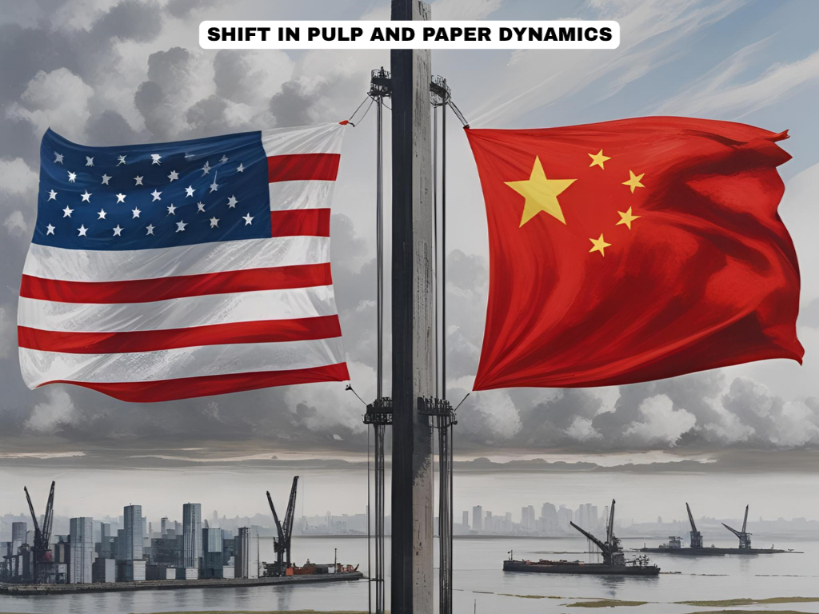A TARIFF TRUCE THAT COULD TIGHTEN PULP AND SHIFT PACKAGING DYNAMICS.
A TARIFF TRUCE THAT COULD TIGHTEN PULP AND SHIFT PACKAGING DYNAMICS.
In a development poised to reshape global trade flows, the Chinese and American delegations jointly announced a mutual reduction in tariffs this morning. This breakthrough signals not just a thaw in long-standing trade tensions between the world’s two largest economies but also sets in motion a ripple effect across shipping, commodities, and key manufacturing sectors, especially paper and packaging.
SHIPPING SURGE AND CONTAINER CRUNCH
With trade lanes reopening at full throttle, we anticipate a sharp rise in trans-Pacific freight demand. Shipping rates, already under pressure due to capacity mismatches and vessel availability, are expected to surge. As more goods begin to flow from Chinese ports to the U.S., global container logistics may face renewed imbalances, especially in eastbound trans-Pacific routes.
CHINA’S DOMESTIC RECOVERY & EXPORT ACCELERATION
An important consequence of the agreement is likely to be a rebound in China’s domestic demand, which has remained sluggish in recent quarters. Coupled with increased exports to the U.S., this rebound could act as a catalyst for upstream raw materials and downstream finished goods.
The paper and packaging sector stands to gain significantly from this uptick, particularly Folding Box Board (FBB), tissue products, and paper grades used in consumer packaging and retail. Demand from the U.S. for packaged consumer goods is expected to rise, which will, in turn, support higher prices and improved margins in the sector.
PULP MARKET STILL TIGHT
While global pulp prices saw mild corrections in the past week, the bullish trade outlook could quickly reverse that trend. Stronger demand from Chinese mills, restocking ahead of anticipated volume surges, and a tight supply chain may keep the pulp market constrained. We foresee upward price revisions in the coming month as inventories are rebalanced globally.
SHIFTING TIDES FOR EMERGING MARKETS
On the flip side, emerging economies such as Indonesia, Turkey, Brazil, and members of the GCC, which previously benefited from U.S. trade diversions during the tariff war, may now face headwinds. With preferential access diluted, their exports to the U.S. could decline, creating temporary oversupply in local markets and triggering price volatility.
IMPLICATIONS FOR THE PAPER INDUSTRY
From a business standpoint, this is a critical inflection point. Here’s what industry stakeholders should keep in mind:
- For manufacturers: Expect higher demand, especially for high-quality board and tissue grades. Be prepared for upward price adjustments.
- For converters: It may be prudent to secure pulp-based inputs sooner rather than later.
- For exporters: Diversifying market risk is more important than ever, as U.S.-centric demand could skew regional dynamics.
- For importers: Monitor shipping rate fluctuations closely and revise delivery schedules accordingly.
The U.S.–China tariff reduction may mark the beginning of a broader trade normalization phase, but it also brings complexity. For those in the paper and packaging industry, staying agile, responsive to shifts in demand, and plugged into global supply chain signals will be key to thriving in this next chapter of global commerce.
At Coniferous, we continue to monitor global market shifts and help our partners adapt with confidence, providing sustainable, timely, and market-aligned paper solutions around the world.


